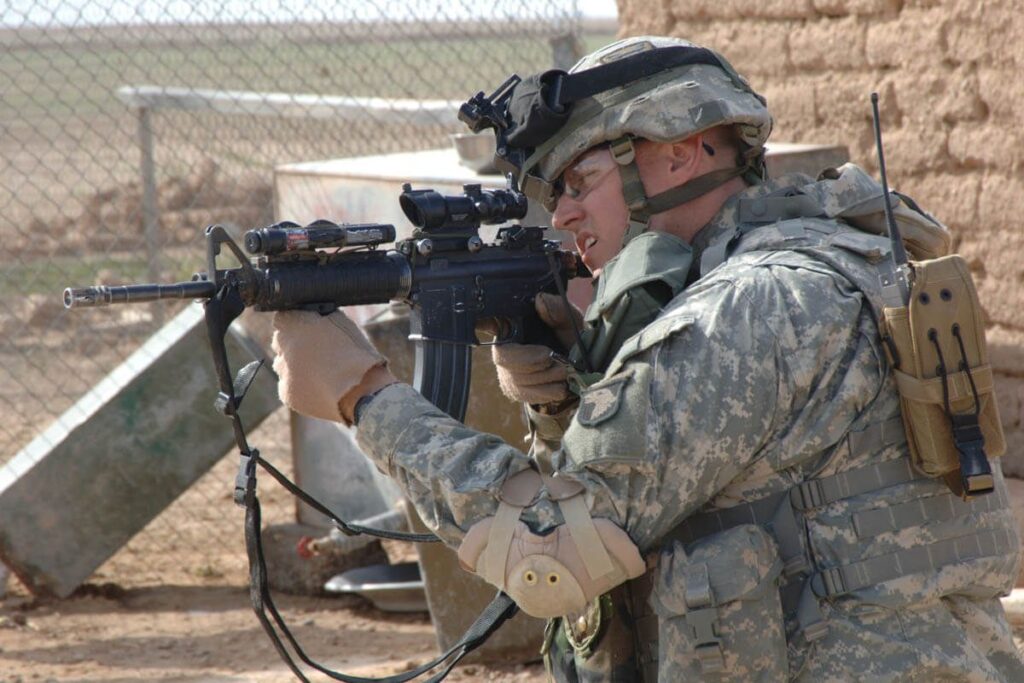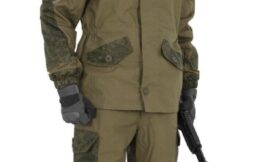The M4 Carbine is a widely used, versatile, and effective assault rifle that has become the standard issue for the United States military and many other armed forces around the world. Developed as a shorter and more compact version of the M16 rifle, the M4 Carbine is renowned for its adaptability, reliability, and ease of use in a variety of combat scenarios.

Historical Background
The M4 Carbine was developed in the 1980s and 1990s to address the need for a more compact weapon for use by U.S. military forces, especially those operating in close-quarters combat environments. The M16 rifle, while highly effective, was considered too long and cumbersome for certain operations, particularly those involving vehicle crews, paratroopers, and special operations forces.
The development of the M4 Carbine aimed to retain the core features and performance of the M16 while offering a shorter, lighter, and more maneuverable weapon. After extensive testing and evaluation, the M4 was officially adopted by the U.S. military in the mid-1990s, replacing many of the M16 rifles in service.
Design and Features
The M4 Carbine is a gas-operated, air-cooled, magazine-fed, selective-fire carbine. It is chambered for the 5.56×45mm NATO cartridge, offering a balance of range, accuracy, and stopping power. Key features of the M4 Carbine include:
- Compact Size: The M4 Carbine features a 14.5-inch barrel, making it significantly shorter than the standard M16’s 20-inch barrel. This compact size enhances maneuverability, particularly in close-quarters combat and urban environments.
- Retractable Stock: The M4 is equipped with a telescoping stock, which can be adjusted to six different positions. This feature allows the weapon to be shortened or lengthened to fit the user’s preference and operational needs.
- Modularity: The M4 Carbine has a modular design, with a Picatinny rail system on the upper receiver and handguard. This allows for the attachment of a wide range of accessories, including optical sights, laser aiming devices, flashlights, vertical grips, and grenade launchers.
- Selective Fire: The M4 Carbine offers both semi-automatic and three-round burst fire modes. Some variants, such as the M4A1, include a fully automatic mode, allowing for continuous fire with a single pull of the trigger.
- Gas Impingement System: The M4 uses a direct impingement gas system, where gas from the fired cartridge is directed back into the bolt carrier to cycle the action. This system contributes to the weapon’s lightweight design but requires regular maintenance to ensure reliability.
Variants
The M4 Carbine has several variants, each designed to meet specific operational requirements:
- M4: The standard version, featuring semi-automatic and three-round burst fire modes.
- M4A1: An upgraded version with fully automatic fire capability, often used by special operations forces.
- SOPMOD Block I/II: Special Operations Peculiar Modification (SOPMOD) kits that include various accessories and enhancements for special operations use.
Military and Law Enforcement Use
The M4 Carbine has become the standard issue weapon for the U.S. Army and Marine Corps, replacing the M16 in many units. It is also widely used by special operations forces, including the U.S. Navy SEALs, Army Rangers, and Delta Force. The M4’s versatility, compact size, and ability to be customized with various accessories make it ideal for a wide range of missions, from direct action raids to peacekeeping operations.
Law enforcement agencies in the United States and around the world also use the M4 Carbine. Its reliability and adaptability make it suitable for SWAT teams and other tactical units that require a powerful and flexible weapon for urban operations.
Performance
The M4 Carbine is praised for its balance of firepower, accuracy, and maneuverability. The 5.56×45mm NATO cartridge provides effective range and stopping power while minimizing recoil, allowing for rapid follow-up shots. The weapon’s modularity and compatibility with a wide range of accessories enable operators to tailor it to their specific needs, whether for close-quarters battle or longer-range engagements.
Conclusion
The M4 Carbine has established itself as one of the most versatile and effective rifles in modern military history. Its compact size, reliability, and modular design have made it the weapon of choice for a wide range of military and law enforcement units. As the standard issue rifle for the U.S. military and many allied forces, the M4 Carbine continues to play a critical role in modern warfare and tactical operations.


